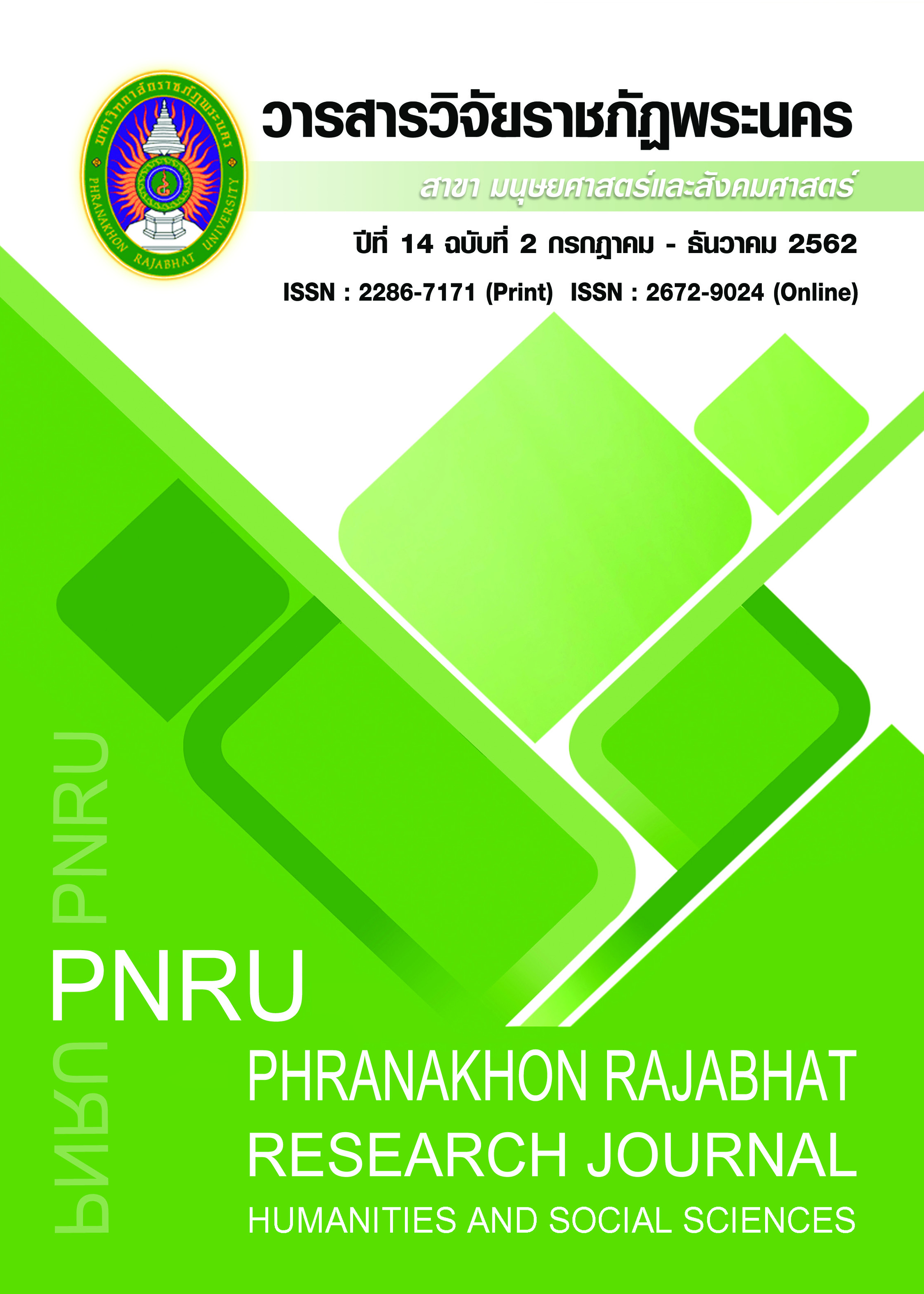LANGUAGE POLICY TO DISTRIBUTE CHINESE AND CULTURE VIA HSK TEST
Main Article Content
Abstract
The objectives of this research were 1) to survey the opinion and attitude of Thai students toward the HSK test, 2) to study the linkage of Chinese policy on distributing Chinese language and culture, and 3) to set up the guidelines for the Chinese learning management in institutions to suit with Thai current situation. Data were gathered from 220 Thai students who joined the Chinese for HSK Test project from 25 institutions in southern Thailand. The results revealed that 90.46 % of students believed that HSK Test was the policy to
distribute Chinese language and culture and also the instrument to enhance the ‘soft power’ for extending culture, value, and foreign policy. Besides, the students believed this policy was used to lay the foundation for economic extension and other plans of the People’s Republic of China (PRC) in the future. In contrast, 9.54 % of students believed that the HSK test was not involved with the policy to distribute Chinese language and culture. The HSK test was just an instrument to reach the Chinese proficiency and knowledge. The research results can be used to set up the guidelines for the Chinese learning management in institutions to suit with Thai current needs and situations; and also, can be used to set up the Chinese language policy at any levels such as the policy planner, the institutions, and the officials
Article Details
Each publish articles were copyright by Phranakorn Rajabhat University
Any contents which appeared in each articles in the journal were authors personal opinion. It did not relate to Phranakorn Rajabhat University and other instructors in the university. Each authors would take responsibility on their articles. If there are any mistake, the authors will take responsibility themselves
References
Feng, Zhiwei. (1999). Applied Linguistic. Guangdong: Guangdong Education Press. (in Chinese)
Fukushima, Y., Numtong, K. & Na Ranong, S. (2013). The popularity of learning Japanese and Chinese languages among KU students: how are their motivation different. Japanese Studies Journal. 30(1), 27-40. (in Thai)
Gardner, R. C. & Lambert, W. E. (1972). Attitudes and motivation in second language learning. Rowley, MA: Newberry House.
Guo, X. (2008). Repackaging Confucius: PRC public diplomacy and the rise of soft power. Asia Paper.1 ,1-50.
Haugen, E. (1959). Planning for a standard language in modern Norway. Anthropological Linguistics. 1(3), 8-21.
Lee, K. (2010). Towards a new framework for soft power: an observation of China’s Confucius Institute. Inter Faculty, Retrieved Dec 28, 2010, form http://journal.hass. tsukubu.ac.jp/interfaculty/article/view/3/5.
Li, Y. (2010). Chinese language planning. Beijing: The Commercial Press. (in Chinese)
Liu, C. & An, R. (2012). Confucius Institute globalization research. Beijing: China Social Sciences Press. (in Chinese)
Nye, J. (2004). Soft power: The means to success in world politics. NY: Public Affairs.
Wang, H. & Zhou, Y. (2015). Global language planning and language policy theories. Beijing: China Social Sciences Press. (in Chinese)
Wang, Z. & Wu, Y. (2015). The global development report of Chinese language dissemination from 2011-2014. Chinese Language Globalization Studies. Journal of Xinjiang Normal University (Philosophy and Social Sciences). 36(4),92. (in Chinese)
Yang, R. (2010). Soft power and higher education: an examination of China’s Confucius Institutes. Globalization, Societies and Education. 8(2), 235-245.
Yan, X. (2014). The comparative studies of Chinese language teaching between Confucius institutes and schools. Hangzhou: Zhejiang University Press.


